From inside (document excerpt):
O p e r a t i n g M a n u a l Recovery, Recycling, Recharging Unit Model RA-C34788 Operating Manual for Model RA-C34788 Recovery, Recycling, & Recharging Unit SAFETY DEFINITIONS: Follow all WARNING, CAUTION, IMPORTANT, and NOTE messages in this manual. These messages are defined as follows: WARNING means you may risk serious personal injury or death; CAUTION means you may risk personal injury, property damage, or unit damage; IMPORTANT means you may risk unit damage; and NOTEs and OPERATING TIPS provide clarity and helpful information.
Heating, Ventilating and Air Conditioning User Manual Free Download. HAVC Operator’s Manual. Auto AC Free Instruction Manual Download PDF.
These safety messages cover situations the manufacturer is aware of. You must verify that conditions and procedures do not jeopardize your personal safety. DISCLAIMER: Information, illustrations, and specifications contained in this manual are based on the latest information available at the time of publication. The right is reserved to make changes at any time without obligation to notify any person or organization of such revisions or changes. Further, the manufacturer shall not be liable for errors contained herein or for incidental or consequential damages (including lost profits) in connection with the furnishing, performance, or use of this material. If necessary, obtain additional health and safety information from the appropriate government agencies and the vehicle, refrigerant, and lubricant manufacturers. WARNINGS ALLOW ONLY QUALIFIED PERSONNEL TO OPERATE THE UNIT. Before operating the unit, read and follow the instructions and warnings in this manual. The operator must be familiar with air conditioning and refrigeration systems, refrigerants, and the dangers of pressurized components. If the operator cannot read this manual, operating instructions and safety precautions must be read and discussed in the operator’s native language. PRESSURIZED TANK CONTAINS LIQUID REFRIGERANT. Do not overfill the internal storage vessel, because overfilling may cause explosion and personal injury or death. Do not recover refrigerants into nonrefillable containers; use only federally authorized refillable containers (DOT spec. 4BW or 4BA). HOSES MAY CONTAIN LIQUID REFRIGERANT UNDER PRESSURE. Contact with refrigerant may cause personal injury. Wear protective equipment, including safety goggles. Disconnect hoses using extreme caution. DO NOT BREATHE REFRIGERANT AND LUBRICANT VAPOR OR MIST. Exposure may cause personal injury, especially to the eyes, nose, throat, and lungs. Use the unit in locations with mechanical ventilation that provides at least four air changes per hour. If accidental system discharge occurs, ventilate the work area before resuming service. DO NOT USE AN EXTENSION CORD. An extension cord may overheat and cause fire. If you must use an extension cord, use the shortest possible cord with a minimum size of 14 AWG. TO REDUCE THE RISK OF FIRE, do not use the unit in the vicinity of spilled or open containers of gasoline or other flammable substances. DO NOT USE COMPRESSED AIR TO PRESSURE TEST OR LEAK TEST THE UNIT OR VEHICLE AIR CONDITIONING SYSTEM. Some mixtures of air and R-134a refrigerant are combustible at elevated pressures. These mixtures are potentially dangerous and may result in fire or explosion causing personal injury or property damage. USE THIS UNIT WITH R-134a REFRIGERANT ONLY. The unit is designed to recover, recycle, and recharge only R-134a refrigerant. Do not attempt to adapt the unit for another refrigerant. Do not mix refrigerant types through a system or in the same container; mixing of refrigerants will cause severe damage to the unit and the vehicle air conditioning system. HIGH VOLTAGE ELECTRICITY INSIDE THE UNIT HAS A RISK OF ELECTRICAL SHOCK. Exposure may cause personal injury. Disconnect the power before servicing the unit. OPERATING NOTE: At temperatures exceeding 120° F / 49° C, wait 10 minutes between recovery jobs. Table of Contents Introduction . 2 TechnicalSpecifications 2 KeypadFunctions . 3 Glossary 3 MenuFunctions 4 Setup 5 UnpacktheAccessoryKit 5 Power Up the Unit 5 Select a Language . 5 SelectOperatingUnits . 5 Set Tank Fill Level 6 Add Oil to the Vacuum Pump 6 FilltheInternalStorageVessel . 7 OperatingInstructions . 8 Recover Refrigerant from a Vehicle . 8 EvacuatetheA/CSystem . 9 FlushingtheHoses . 10 ReplenishA/CSystemOil .


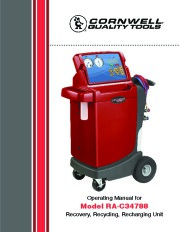 Robinair SPX RA C34788 Recovery Recycling Recharging Unit Owners Manual - 1 of 24
Robinair SPX RA C34788 Recovery Recycling Recharging Unit Owners Manual - 1 of 24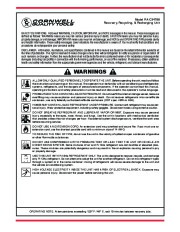 Robinair SPX RA C34788 Recovery Recycling Recharging Unit Owners Manual - 2 of 24
Robinair SPX RA C34788 Recovery Recycling Recharging Unit Owners Manual - 2 of 24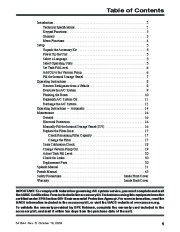 Robinair SPX RA C34788 Recovery Recycling Recharging Unit Owners Manual - 3 of 24
Robinair SPX RA C34788 Recovery Recycling Recharging Unit Owners Manual - 3 of 24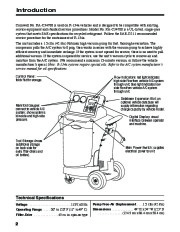 Robinair SPX RA C34788 Recovery Recycling Recharging Unit Owners Manual - 4 of 24
Robinair SPX RA C34788 Recovery Recycling Recharging Unit Owners Manual - 4 of 24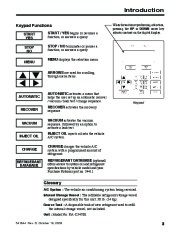 Robinair SPX RA C34788 Recovery Recycling Recharging Unit Owners Manual - 5 of 24
Robinair SPX RA C34788 Recovery Recycling Recharging Unit Owners Manual - 5 of 24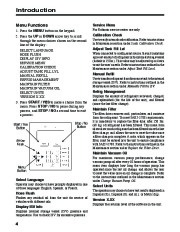 Robinair SPX RA C34788 Recovery Recycling Recharging Unit Owners Manual - 6 of 24
Robinair SPX RA C34788 Recovery Recycling Recharging Unit Owners Manual - 6 of 24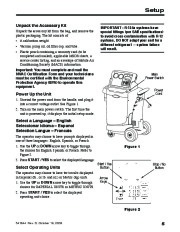 Robinair SPX RA C34788 Recovery Recycling Recharging Unit Owners Manual - 7 of 24
Robinair SPX RA C34788 Recovery Recycling Recharging Unit Owners Manual - 7 of 24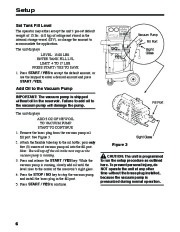 Robinair SPX RA C34788 Recovery Recycling Recharging Unit Owners Manual - 8 of 24
Robinair SPX RA C34788 Recovery Recycling Recharging Unit Owners Manual - 8 of 24 Robinair SPX RA C34788 Recovery Recycling Recharging Unit Owners Manual - 9 of 24
Robinair SPX RA C34788 Recovery Recycling Recharging Unit Owners Manual - 9 of 24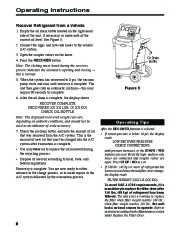 Robinair SPX RA C34788 Recovery Recycling Recharging Unit Owners Manual - 10 of 24
Robinair SPX RA C34788 Recovery Recycling Recharging Unit Owners Manual - 10 of 24